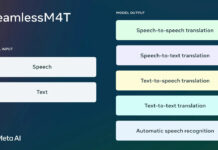Obtaining Australian Permanent Residency (PR) is a cherished goal for numerous international students studying in Australia. This blog explores the extensive benefits of PR, outlines the eligibility criteria and selection process, and delves into the three primary pathways available for students already residing in Australia on a Student Visa (500) or a Temporary Graduate Visa Subclass 485.
Benefits of Australian Permanent Residency:
Obtaining Australian PR offers a multitude of advantages, including:
- Indefinite stay in Australia: PR allows you to reside in Australia indefinitely, granting you a sense of stability and security.
- Access to Australian national health scheme: With PR, you become eligible to enroll in Medicare, the country’s national health scheme, providing you with comprehensive healthcare coverage.
- Australian Citizenship eligibility: PR holders can apply for Australian Citizenship after meeting the necessary requirements, allowing for greater opportunities and benefits.
- Property ownership: PR status enables you to apply for bank loans and purchase property in Australia, providing a pathway to long-term financial stability and investment opportunities.
- Sponsorship of eligible relatives: PR holders have the privilege of sponsoring eligible relatives for permanent residency, allowing loved ones to join and establish their lives in Australia.
Eligibility Criteria for Australian Permanent Residency:
To be eligible for Australian PR, applicants must meet the following criteria:
- Age requirement: The applicant must be under 45 years old at the time of application.
- Points requirement: A minimum of 65 points must be obtained on the points-based assessment, which considers factors such as age, English language proficiency, work experience, and education qualifications.
- Occupation eligibility: The applicant’s occupation must be listed on the Medium and Long-term Strategic Skills List (MLTSSL), ensuring that their skills are in demand in Australia.
- Skills assessment: The applicant’s skills must be assessed by the relevant authoritative body, such as Engineers Australia or the Australian Computer Society (ACS), based on their educational background and work experience.
- Medical and Character Assessments: Successful completion of medical and character assessments is necessary to demonstrate good health and character.
- Pathways to Australian Permanent Residency:
- Several pathways exist for obtaining Australian PR, including skill-based, business, and work visas. This blog focuses on the three most popular pathways for international students:
- Skilled Independent Visa (189): This pathway is suitable for individuals with skills in high-demand occupations who do not require sponsorship from an employer or a state/territory government.
- professional Nominated Visa (190): This pathway requires nomination by a state or territory government, allowing individuals with skills in demand by a particular region to apply for PR.
- Professional Paintings Local Visa – Provisional (491): This pathway involves sponsorship by a relative living in a designated regional area of Australia and provides a pathway to PR for individuals with skills in demand in regional areas.
- Application Process for Australian Permanent Residency:
- The following steps outline the application process for PR:
- Choose an occupation from the Skilled Occupation List (SOL) that aligns with your skills and qualifications.
- Meet the points requirement by assessing factors such as age, English language proficiency, work experience, and educational qualifications.
- Lodge an Expression of Interest (EOI) through the online platform, expressing your interest in obtaining PR.
- If successful, you will receive an Invitation to Apply (ITA) from the Department of Home Affairs.
- Submit a comprehensive application, providing the required documentation and evidence to support your eligibility for PR.
- Undergo medical examinations and obtain police clearances to fulfill the medical and character assessment requirements.
- Also Read: – How easy is it to get PR in Australia?















































